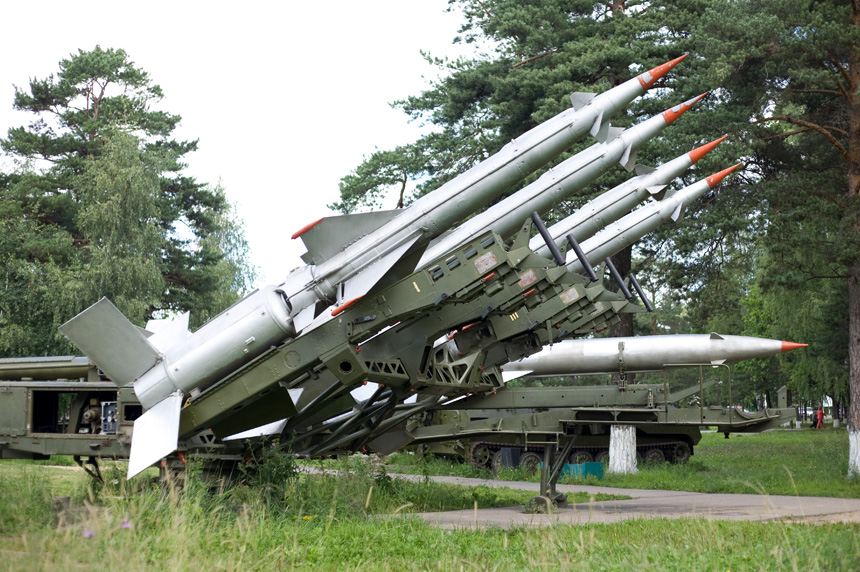Stay up to date with the latest OSINT news from around the world
This week in open-source intelligence (OSINT) news, an investigative group identifies the Russian programmers guiding missiles toward Ukrainian citizens. Meanwhile, China’s investments in Russian natural gas have been slowed to a standstill by sanctions, claims a report from Tearline. Economists are also looking to evolve their methods for measuring the impact of rare events such as pandemics and wars and are finding OSINT to be an effective tool. Researchers are also looking at what information warfare in Eastern Europe can teach western democracies about fighting disinformation.
News from The White House also released new penalties for foreign investors who violate national security, something its committee plans to use OSINT to enforce.
This is the OSINT news of the week:
Who is programming Russian missiles?
A joint investigation between Bellingcat’s open-source investigative group, the Insider and German newspaper Der Spiegel identified over 30 Russian engineers known to program missiles to strike civilian targets in Ukraine. The secret unit housed within the Main Computer Center (MCC) of Russia’s military contains mostly young men and women.
The Insider used a combination of known missile launch dates and times from open-source information and call logs to match times and launches. The engineers of the unit have a range of backgrounds from information technology to game development. The personnel could be linked to certain missile types.
“Phone records of Bagnyuk and his subordinates in the weeks prior to the Oct. 10 strikes show an increase in call activity, starting from Oct. 2 and peaking on Oct. 9. At the same time, 11 calls were made to the mission guidance engineers on the last day before the strikes.”
— The New Voice of Ukraine, Yahoo
Using OSINT to measure the economic impact of potential wars
Economists rely on traditional methods for measuring trade deals, sanctions and other predictive measures of the world economy. Computational general equilibrium (CGE) models are “the gold standard” according to Forbes, but the analysis is based on precedent, making it inadequate at measuring major events, such as once-in-a-generation pandemics.It is also insufficient for measuring the potential economic fallout of war.
Since the Russian invasion of Ukraine, many researchers have been eyeing another potential conflict in the South China Sea. Measuring the catastrophic effect of a Chinese invasion of Taiwan is difficult using traditional models like CGE. That’s why two Forbes journalists and researchers turned to OSINT. With data to suggest that China may target transportation and technology facilities, a potential war would likely damage the world supply chain, but could even take Taiwan effectively offline. That kind of economic impact would be difficult to match with the traditional toolbox of tariffs and sanctions toward China. As the world evolves and rare events become more commonplace, economists will need new tools for measuring impact, and they may find reliable ones with OSINT.
“We argue that a Chinese invasion of Taiwan would not only severely disrupt container shipments in the Taiwan Strait and nearby waters, but also could also knock the island off-grid in the digital economy and break critical links in global value chains, putting high-tech sectors like semiconductor manufacturing in jeopardy.”
— Christine McDaniel, Forbes
Learning from information warfare in Eastern Europe
A festival in August 2021 to celebrate freedom in the Baltic states descended into a rally for anti-vaccination status and conspiracy theories, and, according to NATO, likely to have been funded and promoted by Moscow. The growing efforts by Russia to use social media in order to start and perpetuate conspiracy theories and increase polarizations has been particularly effective with the proliferation of smartphones and constant connectivity. There are lessons to be learned for the west in developing strategies to combat these Russian campaigns at home, according to the Modern War Institute.
Russia has launched campaigns in the democracies of Eastern Europe to undermine faith in institutions and increase polarization. The strategies vary by country, for some it is to paint their governments as puppet actors for U.S. interests. In others, it is to inspire a reminiscent feeling about the Soviet years of the past. There is no easy solution to fighting the spread of these messages, especially in liberal democracies where censoring online speech is left to the private sector. But the increase of such propaganda requires the U.S. and other democracies to develop countermeasures to proactively mitigate its effects. Among them, U.S. political leaders should be wary of promoting the polarizing talking points developed and pushed by Russian and Chinese social media influence campaigns.
.
“Until the United States and its allies and partners adopt digital countermeasures, China and Russia will keep influencing their own citizens and Western populations in the cyber domain.”
— Olga R. Chiriac and Jahara Matisek, Modern War Institute
China’s arctic investments delayed
China has been working to expand its energy sources and fortify its economy in a move many analysts see as preeminent protection against future sanctions. One such avenue for diversifying energy imports is its investment in Russian natural gas. With one project complete in the arctic, a second had been slated for 2022. But Russian sanctions are holding up construction, according to a report by Tearline.
Using commercial satellite imagery and publicly available information, a joint research effort between the National Geospatial-Intelligence Agency (NGA) and Washington University in St. Louis discovered slowed progress at the project sites. Based on imagery of trainyards in China it appears construction materials are now being routed to Russia to help expedite progress on the project. The authors of the report are watching if delays on the project will cause China to invest in energy sources in other countries.
“Maritime tracking websites indicate that the Xin Guang Hua is en route from China to Murmansk, with an estimated arrival date of October 18, 2022.”
— Seth Stevenson and Matt Jones, Tearline Project
New federal guidelines for foreign investment
The U.S. Committee on Foreign Investments (CFIUS) released new enforcement and penalty guidelines for foreign investors and companies who violate national security protocols. In an effort to mitigate national security risks, the guidelines identify three categories of conduct for violations. The guidelines specifically identify “publicly available information” as one the sources of information CFIUS can rely upon to conduct enforcement efforts. The new enforcement rules, and the increased push to utilize open-source material in the foreign investment space, are being enacted among concerns from lawmakers and analysts that China and other adversarial nations are playing a major role in supporting U.S. technology companies and using their access to utilize commercial technology for military applications.
The mandate takes a stricter approach to send the message that “compliance with CFIUS mitigation agreements is not optional,” according to the assistant secretary of the Treasury Department, which oversees the committee.
“The national security threat posed by foreign involvement in major technology companies—particularly those originating from adversarial countries, such as China—has led to growing alarm from both Congress and the Biden administration.”
— Edward Graham, NextGov
Every other week, we collect OSINT news from around the world. We continue to keep a close watch on Russia's war in Ukraine, especially on Twitter. We’re also gathering information on cyberthreats, federal intelligence strategies and much more. Find us on Twitter and share the OSINT news you’re keeping up with.
To keep up to date on the latest OSINT and cyber security news, visit authentic8.com/blog.
Tags OSINT news

